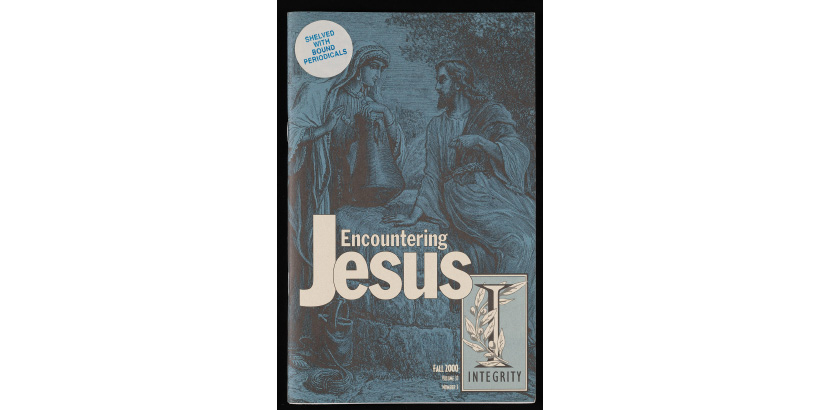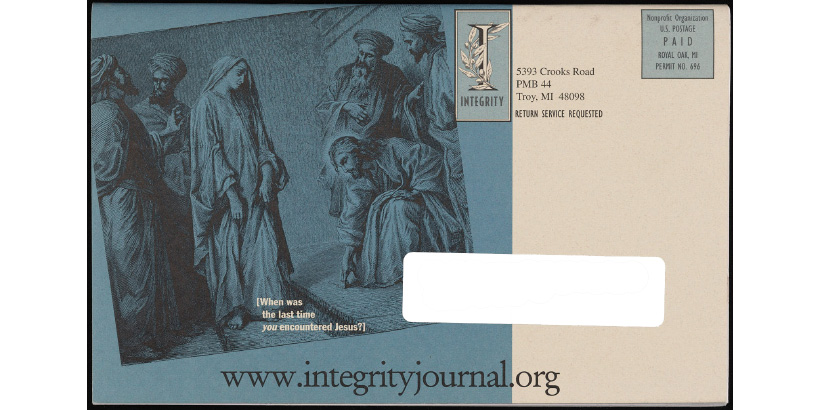"Integrity": The Story in its Editorial Board Minutes

The journalism of the Stone-Campbell Restoration Movement, the religious movement
that gave rise to the Churches of Christ, includes a historical journal titled Integrity, which was published in Flint, Michigan, during the latter part of the 20th century.
Pepperdine Libraries’ Churches of Christ Heritage Center, as a part of its extensive
Restoration Movement Publications collection, houses several archival issues of this
journal. Drawing on the instincts of the Stone-Campbell Restoration Movement, Integrity strove for unity among those who believe in the authority of the Bible and provided
a forum for discussion of current issues that troubled and plagued its unity (Foster,
et al., 2004, p. 417).
More recently, the Heritage collection added the complete minutes and financial reports
of Integrity’s editorial board, which span the entire life of the publication from 1969 to 2002.
This collection offers insight into the development and operation of the journal.
These materials collectively tell the story of the original editorial board and a
corporation composed of members of the Churches of Christ from Flint, Michigan, who
came together around a shared vision and with a spirit of unity to undertake the work
of the publication of Integrity (Foster, et al., 2004, p. 417).

The journal’s early leaders included the first editor-in-chief, Hoy Ledbetter, as
well as David Elkins, Frank Rester, and Dean Thoroman. The editorial board made decisions
regarding the development of the mailing list, finances, fundraising, editorial policy,
board development, equipment purchase, and printing location. Integrity would be free,
existing solely on donations from readers (Foster, et al., 2004, p. 418), and initially
sent to the same mailing list of those who subscribed to Mission, another Churches of Christ journal. Board members were asked to support the journal
with monthly donations, and leaders even encouraged them to borrow against their life
insurance policies and explore loans from friends and family to finance the start-up
costs. At the February 28, 1971 meeting, publication responsibilities were divided
among these dedicated board members. Cutting and mailing would be done by J. Welker,
assembling by A. Ponder, trimming by V. Moughler, folding by R. Hodson, stapling by
H. Stark and M. Tucker, and addressing by D.E. Thoroman. Meeting minutes from April
18, 1971 record that a $4500 IBM Composer, which had been purchased for the effort,
would be installed in Hoy Ledbetter’s basement.
Many who served on the editorial board also wrote features for the publication. Early
on, they discussed plans for hosting lectures on topics such as the scriptural teaching
on the role of women in church life. Articles submitted and reviewed for publication
covered themes such as church growth and the work of the Holy Spirit in conversion
and sanctification (Foster, et al., 2004, p. 417). Issues of Integrity also included
poetry, although it was never a reader favorite. Instead, readers of Integrity favored
articles on the unity of believers, biblical interpretation, worship, and issues facing
society. They appreciated that the journal articles were open-minded and thought-provoking.
The journal pages were a space where the “sacred cows” of the Churches of Christ could
be questioned and challenged, rejected or accepted (Foster, et al., 2004, p. 417).

By the mid-1990s, Integrity had readers in many states beyond Michigan, including Texas, California, and Illinois.
Though many readers supported the journal with donations using envelopes included
in every issue, financial support was an ongoing challenge. The board conducted numerous
reader surveys and formed a task force to increase readership, but in 2002 the publication
folded due to a lack of funding. Keith Price, the last board secretary, maintained
the records of the editorial board and eventually donated them to the Heritage collection.
He wrote, “If they are of any value, please use them as you see fit. I kept them around
like you would tax returns. I wasn’t sure what to do with them!”
These records document the history of Integrity and all those who joined in the work. A testament to the larger Stone-Campbell Restoration Movement, these records offer insight into the self-understanding of the Churches of Christ and the understanding others have of this religious movement. And they are a great addition to the collections in the Churches of Christ Heritage Center, where they will continue to tell the story of the unity movement of the Stone-Campbell churches for years to come.
Interested in doing archival research with the Churches of Christ Heritage Collection?
Scholars can contact Special Collections and Archives to make an appointment to explore our collections.

References
Foster, D., Blowers, P., Dunnavant, A., Williams, N. (Ed.). (2004). The encyclopedia of the Stone-Campbell Movement. Grand Rapids, Michigan: William B. Eerdmans Publishing Company.
Integrity (Restoration Movement Publication) Editorial Board Records, Collection no. 0198, Churches of Christ Heritage Center, Special Collections and Archives, University Libraries, Pepperdine University. (Box 1), Malibu, CA.